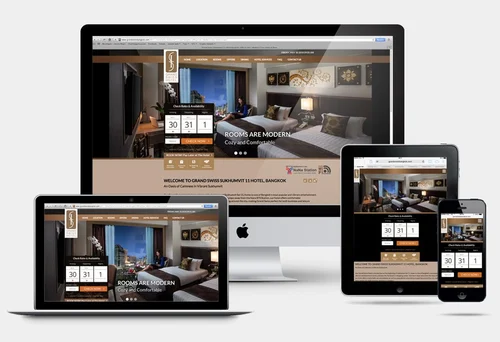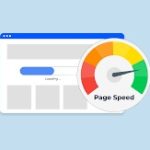In today’s competitive digital marketing landscape, your website is more than just an online presence—it’s a critical touchpoint for your brand. A well-designed, strategically developed website is central to how potential customers perceive your business. The design and functionality of your website play a major role in shaping your brand’s unique identity, building brand authority, and fostering trust with your target audience.
Through custom web development, businesses can tailor every aspect of their website to reflect their brand image, differentiate themselves from competitors, and create an exceptional user experience. Unlike generic templates, custom development allows you to incorporate your business goals, design principles, and values into your online marketing presence, ensuring that your brand is consistent across all digital channels.
This comprehensive guide will explore how custom web development boosts brand identity, the role of web design, and how the best web designers and web developers can bring creative ideas for your brand to life.

The Role of Web Design in Brand Identity
Web design is crucial in establishing and enhancing your brand’s identity. Every aspect of your website’s design, from the layout and colors to fonts and images, contributes to how your audience perceives your brand. A well-executed website design ensures that your website aligns with your company’s personality, values, and goals.
1. Visual Appeal and First Impressions
As the saying goes, first impressions matter. Your website is often the first point of contact a potential customer has with your brand. Users form an opinion about your business in seconds based on its visual appeal and functionality. A visually attractive website that reflects your brand’s unique identity can captivate visitors, encourage them to explore further, and ultimately drive conversions.
Custom web design services allow businesses to have exceptional digital experiences beyond standard templates, offering the freedom to create a unique visual experience that resonates with their audience. From a custom logo design to tailored color schemes and imagery, your website should reflect your brand, strengthening brand visibility and enhancing recognition.
2. Consistency Across All Digital Channels
Brand consistency is key to building trust with your audience. Your brand identity becomes more cohesive when your website mirrors your other marketing materials, business cards, social media profiles, and physical stores. Custom web development ensures that every aspect of your website, from graphic design to content layout, is aligned with your overall branding.
Consistency also extends to user experience (UX). Whether users access your site on mobile devices, desktop computers, or tablets, your website must offer a seamless experience across all platforms. A responsive web design ensures your brand maintains its visual integrity across various screen sizes, providing a consistent and professional user experience.
3. Creating Emotional Connections with Your Audience
Design is not just about aesthetics; it’s about creating an emotional connection with your audience. A custom-designed website allows businesses to use visual storytelling to convey their values and ethos. Businesses can strategically select colors, fonts, and imagery to evoke specific emotions that resonate with their target audience. For example, blue tones may convey trust and professionalism, while bold, bright colors can evoke energy and excitement.
By aligning your website’s visual appeal with your brand’s personality, you attract visitors and make a lasting first impression that encourages them to engage with your business and become loyal customers.
The Impact of Web Development on Brand Identity
While web design focuses on the visual aspects, web development is the backbone that brings your website to life. Custom web development ensures that your site performs efficiently, is easy to navigate, and delivers the functionality that aligns with your business goals. In other words, web development is the engine that drives the seamless user experience critical to brand success.
1. Custom Functionality for a Tailored User Experience
A custom web development approach enables businesses to implement features and functionality tailored to their needs. For example, if you run an e-commerce store, you might need a custom shopping cart system that provides an intuitive, secure, fast checkout experience. Or perhaps you need tools to integrate third-party applications like email marketing platforms or social media feeds to provide a more immersive brand experience.
Custom web developers can create these unique functionalities that make your website more engaging and functional, enhancing the perception of your brand as forward-thinking and user-centric. Furthermore, having a best-in-class website ensures that your business can meet the evolving demands of your potential clients, whether through additional services or improved customer support options.
2. Improved Performance and Speed
Website performance is another key factor in how visitors perceive your brand. A slow, unresponsive website can lead to higher bounce rates and a negative impression of your business. According to research, even a one-second delay in page load times can result in a 7% reduction in conversions. Slow websites can also negatively impact your SEO rankings, making it harder for your target audience to find your business.
Custom web development ensures your site is optimized for performance from the ground up. Web developers can streamline code, minimize page load times, and optimize server performance to create a fast, responsive website. This meticulous attention to detail boosts brand authority by demonstrating that your business values the customer experience.
3. Security and Trust
Security is a fundamental concern for online users, especially in an era where data breaches are increasingly common. A secure website is crucial for maintaining the trust of your clients and customers, especially if your site handles sensitive information like payment details or personal data. Custom web development allows you to build a secure platform that meets industry standards.
Implementing security features like SSL certificates, encryption, and secure payment gateways on create websites sends a strong message to users that your brand is trustworthy and credible. A secure, well-protected website enhances your brand’s unique identity by showing that you prioritize customer safety, which helps build long-term customer loyalty.
Integrating Search Engine Optimization (SEO) with Web Development for Brand Visibility
For your website to have the desired impact on your brand identity, it must be visible to your target audience. This is where search engine optimization (SEO) comes in. SEO is optimizing your website to rank higher on search engines like Google. It helps you attract more organic traffic and increase your online visibility to more clients.
1. SEO Optimized Web Development
A strong SEO-optimized website doesn’t happen by accident. From the coding stage, web developers must ensure the site’s structure supports SEO best practices. This includes optimizing page load speeds, improving mobile responsiveness, and ensuring that URLs, meta descriptions, and alt tags are properly configured. Clean, efficient code makes your website more user-friendly and improves its chances of ranking higher in search results.
2. Content is Key
Another essential component of SEO is high-quality, engaging content. When working with a web design agency, creating a content strategy that integrates keywords relevant to your industry and target audience is important. This helps your website rank higher on search engines and positions your brand as a thought leader in your industry.
Effective content should reflect your brand’s unique identity and deliver value to your audience. From blog posts and product descriptions to landing pages and FAQs, well-crafted content supports search engine optimization while reinforcing your brand authority.
3. Mobile-Friendly Design
Google has prioritized mobile-first indexing, meaning websites optimized for mobile devices are favored in search rankings. A mobile-friendly website is no longer optional—essential for increasing brand visibility. Custom web development ensures that your website is responsive, fast, and easy to navigate on any device, helping you rank higher on mobile searches and improving the overall user experience.
4. Local SEO for Brand Recognition
If your business has a physical location or a web presence serving specific regions, local SEO is a powerful tool for boosting brand visibility. Optimizing your site for local search terms (such as “near me” queries) and ensuring your business is listed on Google My Business can increase your chances of appearing in local search results, driving foot traffic to your physical locations.
The Role of User Experience (UX) in Building Brand Loyalty
Creating a seamless user experience is not just about making your website look good—it’s about ensuring it functions smoothly and meets the expectations of your target audience. A website that’s difficult to navigate or lacks essential features will frustrate users, leading to lower engagement and fewer conversions. On the other hand, a user-friendly website can significantly boost customer satisfaction, loyalty, and brand recognition.
1. Understanding User Behavior
Web designers and developers should use data to understand how users interact with their websites. Analyzing user behavior—such as which pages visitors spend the most time on, where they click, and what causes them to leave—can provide valuable insights into improving UX.
Tools like Google Analytics, heatmaps, and user feedback can help you identify areas for improvement. Custom web development allows businesses to adjust their website structure and design based on real-world data, ensuring users can navigate your site easily and complete desired actions, such as purchasing or signing up for a newsletter.
2. Information Architecture and Intuitive Navigation
Information architecture refers to the organization of your website’s content. Clear, logical site structure makes it easier for users to find the information they need without getting lost. Custom web development allows you to design a site map and navigation tailored to your business needs and your audience’s preferences.
Intuitive navigation, with well-placed menus and calls to action, encourages users to stay on your site longer and engage with your content. A frictionless browsing experience reinforces your brand image as user-centric and professional.
3. Personalization and Engagement
Personalization is a powerful tool for building brand loyalty. Custom web development allows businesses to tailor the user experience based on individual preferences, behaviors, or past interactions. For example, an e-commerce site might suggest products based on previous purchases or browsing history.
Personalized experiences make users feel valued and increase the likelihood of conversions. Customizing content, offers, and product recommendations to meet each visitor’s unique needs can deepen their connection with your brand, increase traffic, and encourage repeat visits.
The Importance of Long-Term Relationships in Web Development
Creating a custom website is not a one-time project; it’s an ongoing process that requires maintenance, updates, and optimization to keep your site performing at its best. Building a long-term relationship with a reliable web design agency is essential for your projects’ continued success, website, and brand.
1. Continuous Improvement and Adaptation
Technology and user expectations are constantly evolving. To stay ahead of the curve, businesses must regularly update their websites to reflect new trends, technologies, and user needs. Whether you need a website redesign, new functionalities, or performance optimization, maintaining a strong relationship with your web developers ensures your site stays competitive in a rapidly changing digital landscape.
2. Ongoing Support and Maintenance
Your website will require ongoing support, from bug fixes and security updates to content additions and feature enhancements. Working with an expert team that understands your brand and business ensures your website remains secure, functional, and SEO-optimized over the long term.
3. Scalability for Future Growth
As your business grows, your website needs to grow with it. Custom web development allows scalability, ensuring you can add new services, products, or features without compromising your site’s performance. Whether you’re expanding your business into new markets, adding new team members, or launching new social media campaigns, your website should be able to adapt seamlessly.
The Power of Storytelling in Web Design for Brand Identity
Storytelling is one of the most effective ways to connect with your audience on a deeper emotional level. In web design, storytelling refers to how your website conveys your brand’s message through visual and written content. A custom website offers endless possibilities to weave a narrative that aligns with your brand’s unique identity and resonates with your target audience.
How Storytelling Enhances Brand Identity:
Emotionally Engaging Content:
Telling a story through your website’s content—about the origins of your brand, the inspiration behind your products, or your business’s mission—humanizes your brand and makes it more relatable. This can foster a stronger emotional connection with your visitors.
Visual Storytelling:
You can visually represent your brand’s journey through carefully selected imagery, color palettes, and typography. For example, a luxury brand might use sleek, high-quality images and a minimalist layout to evoke a sense of sophistication. In contrast, a playful, youthful brand might use bold colors and dynamic animations.
Customer-Centric Storytelling:
Instead of focusing on your brand’s story, you can incorporate your customers’ stories. Testimonials, reviews, and user-generated content can demonstrate how your products or services have impacted real lives, helping potential clients see themselves in your story.
By integrating storytelling into your website design, you create a memorable experience that solidifies your brand in users’ minds.
Enhancing Brand Identity Through Interactive Web Elements
Interactive web elements make your website more engaging and help reinforce your brand’s personality. Custom web development allows you to add interactive features that guide users through your website intuitively and dynamically.
Types of Interactive Elements to Boost Brand Identity:
- Animations and Micro-Interactions: Subtle animations and interactions (such as hover effects, clickable buttons, or scrolling animations) can make your website feel more alive. When done well, these interactions enhance the user experience without detracting from your brand’s message.
- Interactive Product Demos: If your business sells products or services, you can offer users the chance to interact with these offerings through custom demos or simulations. For example, an e-commerce brand could let users customize products on the screen, like changing colors or configurations, reinforcing your brand’s commitment to personalization and quality.
- Quizzes and Assessments: Adding interactive quizzes or assessments can encourage deeper engagement with your brand. For example, a fitness brand might offer a workout style quiz, while a skincare company could provide a skin type assessment. These tools provide personalized recommendations and reflect your brand’s customer-centric values.
By incorporating interactive elements, you create a website that not only attracts users but keeps them engaged, enhancing your brand authority and identity.
Building Trust Through Transparency and Ethical Web Design
In a time when privacy and security are major concerns for online users, web development that prioritizes transparency and ethics can greatly enhance your brand’s trustworthiness. Being transparent about your practices through clear design and communication builds a stronger, more ethical brand.
Ethical Web Design Practices That Reinforce Brand Trust:
- Data Transparency: Ensure that your privacy policy and terms of service are easy to find and understand. Users should never feel like they are being misled or tricked into giving away personal information. Custom web development allows you to include clear prompts about cookies, tracking, and data collection.
- Accessibility and Inclusivity: Building an inclusive website that follows best practices for accessibility ensures that your content is available to a wider audience, including those with disabilities. This shows that your brand is committed to serving all customers, regardless of their abilities. For example, using alt text for images, designing forms with clear labels, and ensuring compatibility with screen readers are important steps toward inclusivity.
- Sustainability in Web Development: Environmental responsibility is increasingly important to modern consumers. Brands that adopt sustainable digital practices—such as creating energy-efficient websites that minimize data consumption and carbon footprint—can attract eco-conscious customers and position themselves as forward-thinking.
These web development strategies foster a sense of trust, integrity, and responsibility, reinforcing your brand’s identity and differentiating it from less transparent competitors.
Conversion-Focused Web Development and Brand Impact
While brand identity is critical for establishing who you are, conversions are essential for ensuring your business thrives. Custom web development can directly impact conversions while maintaining and enhancing your brand’s image. Every feature on your website, from the placement of buttons to the structure of forms, should be designed to encourage users to take action.
Strategies to Align Conversion Optimization with Brand Identity:
- Strong Call-to-Action (CTA) Design: CTAs should align with your brand’s tone and voice while being visually distinct to stand out on the page. For instance, a CTA for a bold, innovative tech brand may use dynamic, action-oriented language, while a luxury brand may use more subtle and refined language.
- Trust Signals and Social Proof: Including customer reviews, case studies, and trust badges (such as secure payment icons or “as seen in” logos) reinforces your brand’s credibility. Integrating these trust signals within your design creates a sense of reliability without overwhelming users with too much information.
- Minimizing Friction in the User Journey: Custom web development allows for creating intuitive user journeys that match your brand’s promise of simplicity or innovation. Whether it’s reducing the steps in the checkout process for an e-commerce brand or streamlining contact forms for a service provider, minimizing friction improves conversions and enhances the overall user experience.
A website that prioritizes conversion optimization without compromising quality can solidify your brand’s reputation as user-friendly, trustworthy, and effective.

The Role of Analytics in Web Development for Brand Growth
Finally, custom web development allows businesses to incorporate advanced analytics tools that help track user behavior, website performance, and brand engagement over time. By monitoring key metrics, businesses can gain valuable insights into how users interact with their brand online, allowing for continual refinement and improvement.
How Analytics Drive Brand Growth:
- Tracking User Engagement: Tools like Google Analytics, heatmaps, and session recordings provide detailed information about how users interact with your website. You can track which pages are most popular, where users drop off, and which CTAs are most effective. Custom web development allows these insights to be directly integrated into your CMS or dashboard.
- A/B Testing for Brand Messaging: A/B testing can help determine which version of your brand messaging or design resonates more with your audience. For example, testing different homepage headlines, color schemes, or button placements can help identify which designs align better with your brand identity and drive higher engagement.
- Measuring SEO Impact: Monitoring how your SEO-optimized pages perform over time allows you to adjust your content and web structure to improve search rankings. With the help of web developers and SEO experts, you can track organic traffic growth, keyword performance, and conversion rates to fine-tune your brand’s online strategy.
Data-driven insights ensure that your brand remains dynamic, responsive, and aligned with your audience’s expectations, all while driving tangible business results.
Conclusion: Boosting Brand Identity with Custom Web Development
Custom web development is an investment in your brand’s future. By creating a website that reflects your brand’s unique identity, delivers a seamless user experience, and is optimized for performance and SEO, you can boost brand visibility, drive traffic, increase conversions, and build stronger connections with your target audience.
Whether you’re starting with a new website or revamping an existing website, partnering with the industry’s best web designers and developers ensures that your website becomes a powerful tool for driving long-term business success.
At LinkLumin, we specialize in the web designer and creating custom websites that look beautiful and function flawlessly. Our web design services are tailored to meet the needs of your business and brand, ensuring that your website reflects your values and helps your business thrive. Contact us today to learn how we can help boost your brand identity through exceptional custom web development.
Tags




